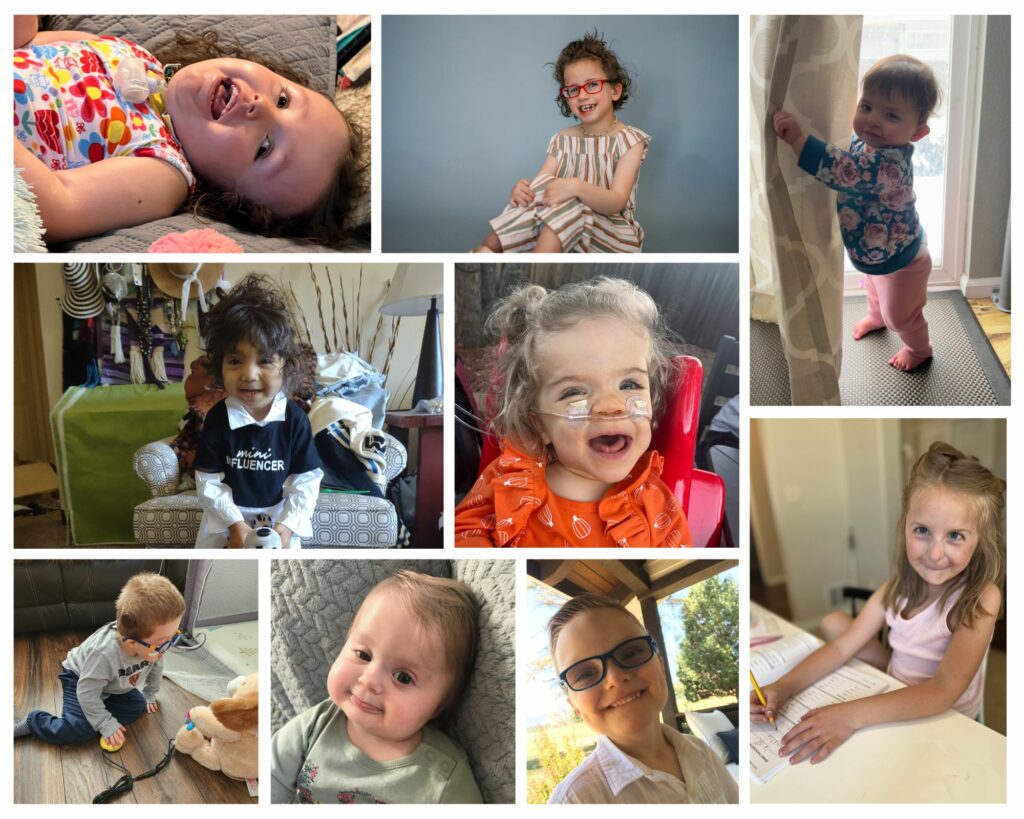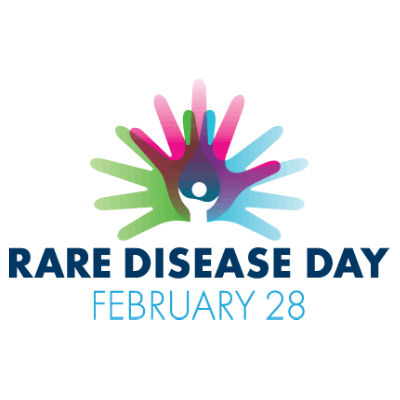
February 28th is Rare Disease Day. It is a day that brings awareness to the over 30 million people in the US and over 300 million people worldwide living with a rare disease. A rare disease in the United States is defined as one that affects less than 200,000 people. Due to their rarity, these diseases don’t get worldwide or even national attention and when we talk about them, people often have never heard of them. But that is not the biggest challenge for people living with a rare disease. Because these diseases affect such a small population, they don’t get researcher’s and drug manufacturer’s interest in developing treatments for these diseases. They may struggle to find doctors who are aware of their condition and how best to treat the resulting symptoms. And they may struggle to find a community of people who are living through similar challenges to provide support when needed. Today, we want to shine a light on the rare conditions some of our Kid Physical Ambassadors, and their families, live with.
8p Inverted, Duplication/Deletion Syndrome. This specific chromosomal abnormality is part of a group of changes to Chromosome 8. There are currently around 350 people with a Chromosome 8 condition throughout the world and currently 60 patients known with 8p inverted duplication/deletion syndrome specifically. There are no known treatments or specialists for this disease and kiddos often display a wide range of symptoms including partial or complete agenesis of the corpus callosum, congenital heart defects, epilepsy, visual conditions, malformations of the skull and face, delayed developmental, and intellectual disabilities. Despite all of this, these kiddos work hard at therapies and are very social. Check out Project 8p for more information.
CHARGE Syndrome. This syndrome name is an abbreviation for several common characteristics of this rare genetic disorder including colobomas (a hole in structures of the eye), heart defects, atresia choanae (blockage of the back of the nasal passage), restriction of growth, genital abnormalities, ear and hearing anomalies. CHARGE is diagnosed in 1 in 10,000-15,000 live births and these kiddos often struggle in the beginning of life, especially with swallowing and breathing problems. There is, however, a wide variety in physical features and cognitive abilities in kiddos with this condition. Despite all of these challenges, these kiddos often develop beyond expectations showing a level of determination that may be unparalleled in their peers. Check out the CHARGE Syndrome Foundation for more information.
Hydranencephaly. This rare condition is one where the cerebral hemispheres of the brain are replaced by sacs of liquid called cerebrospinal fluid. In the United States, this condition is usually seen in approximately 2 out of every 100,000 live births. These kiddos can have problems with growth, cognitive delay, blindness often due to cortical visual impairment, developmental delays and seizures among other conditions. There is no cure and treatments are supportive and depend upon emerging symptoms. Check out the United Brain Association page for more information.
IGF-1R Gene Mutation/Deletion. This is a condition that affects the insulin-like growth factor (IGF) receptor. It is so rare that there is no foundation or informational website or webpage to share clinical or statistical information. It is linked to abnormalities in absorbing nutrients and so can affect growth, intelligence, developing new skills, and a wide range of other abilities unique to each kiddo.
Joubert Syndrome. This is a rare genetic condition that presents clinically with changes in the cerebellum and brain stem. It often includes symptoms of vision loss, intellectual disability, poor coordination and balance, along with kidney and liver disease. Joubert syndrome is estimated to affect 1 in 80,00-100,000 newborns with only a few hundred cases in the medical literature, however this condition be under-diagnosed. People with Joubert Syndrome can grow and progress in their development with support from knowledgeable healthcare providers. Check out the Joubert Syndrome and Related Disorders Foundation for more information.
Kabuki Syndrome. This syndrome includes symptoms of distinctive facial features, reduced heigh, heart defects, and intellectual disability and can include problems with seizures, reduced muscle tone, poor swallowing, visual anomalies, and dental problems. Kabuki affects approximately 1 in 32,000 live births and between 3,000 and 30,000 people are living with this syndrome in the United States today. Despite all of this, people with Kabuki Syndrome can live a normal life span with supportive medical management. They are generally happy and enjoy life to their best efforts. For more information, check out the Kabuki Syndrome Foundation website.
Noonan Syndrome. This syndrome affects multiple systems in the body, most commonly affecting the heart, lymphatics, gastrointestinal, pulmonary, and vision systems. These kiddos typically have reduced growth rates, difficulty eating and absorbing, floppy airways, altered muscle tone, changes to vision, and GERD. Incidence of Noonan Syndrome is reported to be 1 in 1,000 to 2,500 live births. With experienced medical management and therapies these kiddos can thrive. Check out the Noonan Syndrome Foundation website for more information.
Smith-Kingsmore Syndrome. This syndrome is so rare that there are only 50-60 cases known worldwide. These kiddos typically have a larger than normal head (macrocephaly), intellectual disability, seizures, visual conditions, gastrointestinal difficulties, and low muscle tone. Their speech is often delayed and sometimes they are unable to learn this skill. They can also develop ADHD or ASD and may have changes in their brain formation that affect their development. For more information check out the Smith-Kingsmore Syndrome Foundation website.
No matter what the diagnosis, how rare or how common, all of these kiddos and families are warriors. They are fighting a fight that they alone understand, through good days and bad. And those of us on the outside are here to provide support when needed and otherwise a listening ear. As part of supporting these warrior families we should readily encourage awareness and advocacy for each individual.

